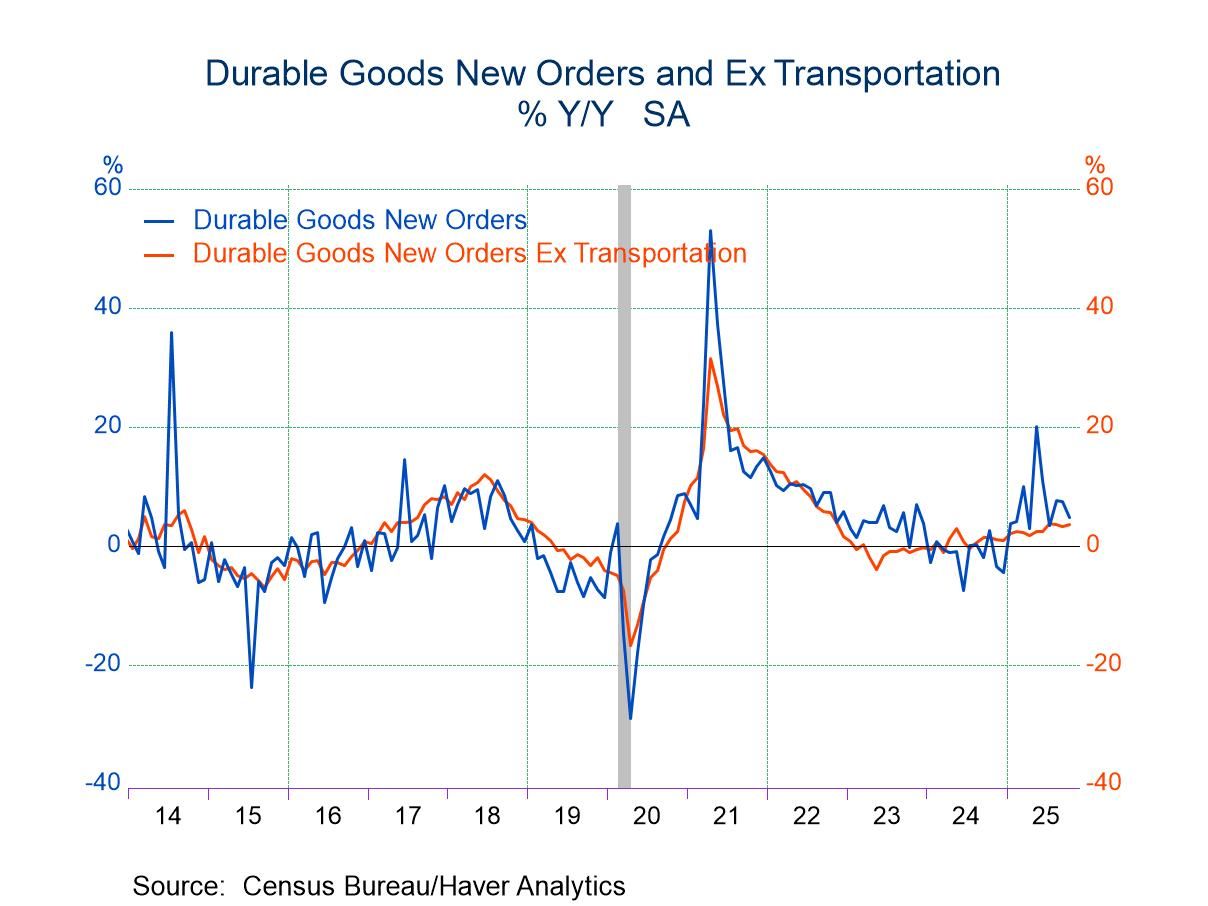Chicago Fed National Activity Index Improves in February
by:Tom Moeller
|in:Economy in Brief
Summary
- Index turns modestly positive after two negative readings.
- Three-month average remains negative.
- Component improvement is widespread m/m.


The Chicago Fed National Activity Index (CFNAI) rose to 0.05 in February from -0.54 in January, revised from -0.30. Smoothing out the monthly volatility, the index's three-month moving average declined to -0.18 from a downwardly revised -0.11 in January.
This index is expressed in standard deviation units from zero (with a value of zero defined as trend real GDP growth). Research at the FRB Chicago indicates that readings on the 3-month average of -0.70 or below are consistent with the economy being in a recession. As a result, the three-month reading in February indicates that the US economy remains on a positive path.
Each of the four broad categories of indicators used to construct the index improved last month versus January. Production-related indicators contributed 0.02 to the CFNAI in February, up from -0.32 in January. The sales, orders and inventories category also contributed 0.02 to the CFNAI after subtracting 0.12 in January, which was its first negative reading in three months. Employment-related indicators added a minimal 0.01 after a 0.02 January subtraction. The personal consumption and housing category made no contribution to the CFNAI following a -0.08 reading in January.
The CFNAI Diffusion Index, which measures the breadth of the change in the component series and is also a three-month moving average, decreased to -0.09 in February from -0.04 in January, the fifth consecutive reading in negative territory. A reading of zero indicates that all of the indicators are growing at their long-term average. If all of the underlying indicators in a given month are below their long-run averages, the diffusion index will equal -1. If all of the indicators are above their long-run averages, it will equal +1.
In February, 46 of the 85 individual indicators made positive contributions to the CFNAI, while 39 made negative contributions. Fifty-four indicators improved from January to February, while 30 indicators deteriorated and one was unchanged. Of the indicators that improved, 17 made negative contributions.
The CFNAI is a weighted average of 85 monthly indicators of national economic activity. It is constructed to have an average value of zero and a standard deviation of one. A positive index reading corresponds to growth above trend and a negative index reading corresponds to growth below trend.
These figures are available in Haver’s SURVEYS database.
Tom Moeller
AuthorMore in Author Profile »Prior to joining Haver Analytics in 2000, Mr. Moeller worked as the Economist at Chancellor Capital Management from 1985 to 1999. There, he developed comprehensive economic forecasts and interpreted economic data for equity and fixed income portfolio managers. Also at Chancellor, Mr. Moeller worked as an equity analyst and was responsible for researching and rating companies in the economically sensitive automobile and housing industries for investment in Chancellor’s equity portfolio. Prior to joining Chancellor, Mr. Moeller was an Economist at Citibank from 1979 to 1984. He also analyzed pricing behavior in the metals industry for the Council on Wage and Price Stability in Washington, D.C. In 1999, Mr. Moeller received the award for most accurate forecast from the Forecasters' Club of New York. From 1990 to 1992 he was President of the New York Association for Business Economists. Mr. Moeller earned an M.B.A. in Finance from Fordham University, where he graduated in 1987. He holds a Bachelor of Arts in Economics from George Washington University.






